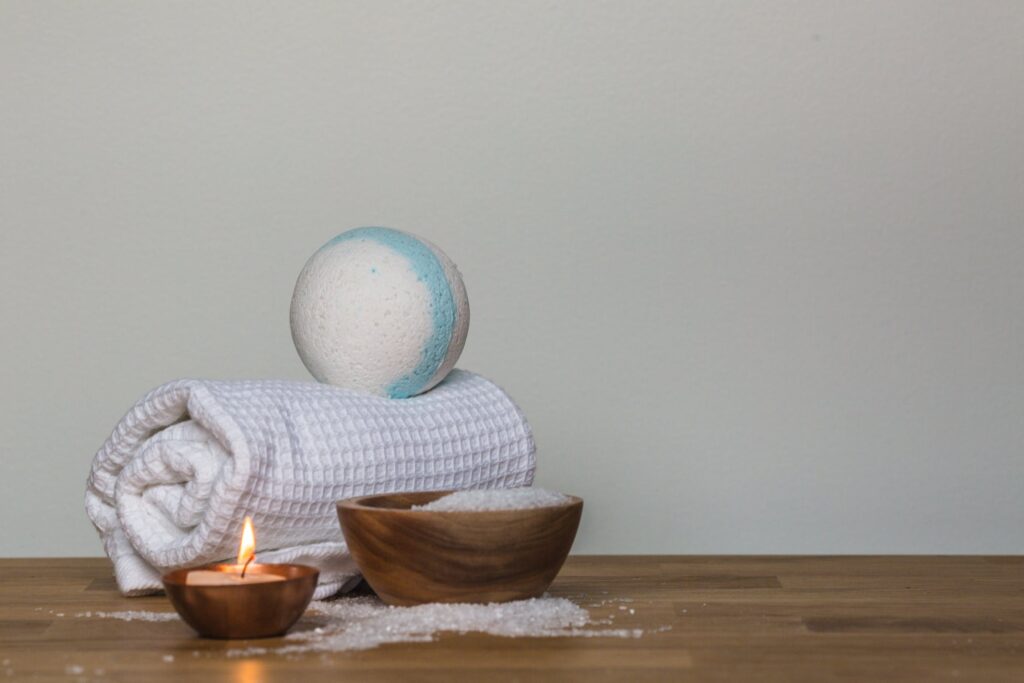You may have noticed that going to a hot sauna after working out at the gym might be beneficial for your body since it can help you relax and get rid of toxins.
The use of saunas dates back thousands of years, and they continue to be popular in modern times. People can de-stress and relax with the use of a sauna, and it may also have other positive effects on their health.
For countless years, people in Scandinavia have been utilizing saunas for the purported health benefits that they provide, including weight loss, relaxation, and cleansing. For instance, out of a total population of 5.2 million people in Finland, the country is home to approximately 2 million saunas. The usage of saunas typically begins in early childhood in Scandinavian countries.
As a form of treatment, sweating has a long history. According to Harvard Health Publications, the Mayans utilized sweat huts more than three thousand years ago. Even though saunas have been there for thousands of years in Finland, one in every three people still visits one today. It is estimated that there are about one million saunas in the United States of America (U.S.).
There is conflicting evidence in the most recent study on the benefits of saunas. If you are thinking about incorporating a sauna into your wellness and health regimen, the first thing you need to do is assess your individual requirements for good health.
The dry heat of a sauna, which may reach temperatures as high as 185 degrees Fahrenheit, has a significant impact on the body. Within minutes, the temperature of the skin increases to almost 104 degrees Fahrenheit. During just ten minutes spent in a sauna, the typical person will produce enough sweat to fill a single-pint container.
The rate of the heartbeat increases by at least thirty per cent, which enables the heart to virtually double the volume of blood that it pumps out each minute. The majority of the additional blood flow is delivered to the surface of the body, which means that circulation actually diverts blood away from the vital organs. As a direct consequence of this, one person's blood pressure may go up while another's blood pressure may go down.
FAQs About Sauna
People use their saunas for many different reasons. If you want to increase perspiration to encourage weight loss and removal of toxins you should shower before an infrared sauna (a hot shower) as this can help to up your perspiration levels. However, we do recommend that you should shower after an infrared sauna too.
If you want to get the best out of your sauna time for your sleep therapy needs, start by going to the sauna before bed. Ideally, step in for a sauna session 15 minutes prior to bedtime. This will raise your body temperature to the right degree range for promoting muscle relaxation and sleep-inducing response.
Bacteria thrive in warm and moist areas, making a steam room a hot spot for risky organisms. Contact with them can cause a variety of health complications, such as skin problems or upset stomachs.
The indulging dry sauna and steamy Turkish bath does wonders for your skin and well being; but they can merciless on your hair, leaving it dry and frizzy.
The researchers say their results may help explain why people who regularly use saunas tend to have a decreased risk for heart disease and even dementia. On average, the study found, sauna users saw a drop in blood pressure and artery "stiffness" immediately after their heat bath.
What Is A Sauna?
A sauna is a room that is often heated to temperatures ranging from 70 to 100 degrees Celsius (158 to 212 degrees Fahrenheit).
In traditional Finnish saunas, the heat is often of a dry nature, and the relative humidity ranges anywhere from 10 to 20 per cent of the time. In some of the other types of saunas, the level of humidity is higher. For instance, Turkish-style saunas feature a higher amount of humidity than traditional saunas.
The usage of a sauna can cause the surface temperature of the skin to rise to around 40 degrees Celsius (104 degrees Fahrenheit).
When the surface temperature of the skin rises, profuse sweating also follows suit. As the body works to maintain its temperature, there is an increase in the rate of heartbeats. When you spend even a short amount of time in a sauna, it is not unusual for you to sweat out approximately a pint.
Benefits of Sauna
For a good reason, the health advantages of using a sauna have received much attention in recent years. Nothing is more physically exhilarating than working up a good sweat every day and doing so for an extended period of time. Tension diminishes. Muscles unwind. We emerge from the experience feeling refreshed, relaxed, and prepared for whatever the day may offer mentally.
It only takes a few minutes out of your day to start looking and feeling better. It is well-documented and shown day in and day out by individuals worldwide that the body adapting to gentle, consistent heat can purify the body, which is why an increasing number of medical professionals are suggesting its purifying effects.
Saunas Improve Overall Health, Wellness, And Performance.
It should come as no surprise that the majority of people who use saunas identify reduced stress levels as the primary advantage of doing so. Studies conducted in the medical field frequently reach the conclusion that the stress we experience in our everyday lives might have a detrimental effect on our health. The great majority of diseases, such as cardiovascular disease, can be traced back to stress in some way.
Indulging in a relaxing session in the sauna can reduce stress in different ways. To begin, it is a cozy and distraction-free environment, as there is no noise or activity emanating from the surrounding area. We have a saying that goes something like this: "Step into a Finnleo sauna, and shut the door on the rest of the world." Secondly, the heat from the sauna helps to relax the muscles of the body, which in turn promotes circulation and triggers the body's natural production of endorphins. Endorphins are the body's natural "feel good" chemical, and the release of endorphins is responsible for the sensation that people call "the after-sauna glow."
Reduce the Risk Of Cardiovascular Disease
Over the course of twenty years, male participants in research in Finland were monitored to determine how they dealt with cardiovascular disease and other conditions of a similar nature. As a component of that study, the researchers kept a log of the number of times each of the guys used a sauna over the course of a given week.
An unexpected finding from this research was that men who went to the sauna at least once a week had a much lower risk of dying from cardiovascular disease, coronary artery disease, or sudden cardiac death. In point of fact, the more often they went to the sauna, the lower their risk was of contracting one of these diseases.
It is believed that these benefits occur as a result of the fact that the sauna has an effect on most people that is comparable to that of moderate exercise. The usage of one causes an increase in heart rate as well as an improvement in circulation. Since more blood is being pushed to the cells in the heart as a result of this, the cells in the heart work more effectively.
The use of a sauna has been connected to a reduction in stress levels, which may be associated with a lower risk of cardiovascular events.
In one study that was carried out in Finland, 2,315 male participants aged 42 to 60 were monitored for a period of 20 years. The findings suggested that persons who utilize a sauna may have a lower risk of death from cardiovascular disease.
There were a total of 878 people who participated in the study who passed away as a result of cardiovascular disease, coronary artery disease, or sudden cardiac death. Furthermore, participants were separated into three groups according to the number of times per week that they went to the sauna: those who went once per week, those who went between two and three times per week, and those who went between four and seven times per week.
After taking into account other risk factors for cardiovascular illness, researchers found that higher sauna use was associated with lower mortality risk from cardiovascular-related conditions.
Those participants in the study who used the sauna anywhere from twice to three times per week had a risk of sudden cardiac death that was 22 per cent lower than those participants who only used the sauna once per week. Those who went to the sauna four to seven times per week had a 63 per cent lower risk of sudden cardiac death and a 50 per cent lower risk of dying from cardiovascular disease than those who went to the sauna only once per week.
There is a clear need for additional research to determine whether or not going to the sauna results in a lower risk of dying from cardiovascular disease.
The usage of saunas has been linked to some health benefits, including improved cardiovascular health and a reduced risk of hypertension.
Even while some studies have shown positive results, going to the sauna shouldn't take the place of a regular exercise routine if you want to maintain your heart healthy. More and more data points to the positive effects of maintaining a consistent workout routine. Despite the fact that a sauna is not a suitable replacement for a health
Pain Relief
People who use dry saunas often report feeling more energized after their session. The heat of a sauna relaxes and dilates the blood vessels, which results in an increase in blood flow. As a result, the experience can assist in reducing stress in the joints and relieving aching muscles.
The reduction of muscular soreness, improvement of joint movement, and alleviation of arthritis pain may all result from increased circulation.
People who suffer from chronic pain or arthritis may find relief from using a sauna. For instance, a study conducted on persons who suffered from chronic musculoskeletal disorders such as rheumatoid arthritis and ankylosing spondylitis found that sauna sessions significantly decreased the subjects' levels of pain, stiffness, and exhaustion over the course of a period of four weeks.
Although every patient stated that they had gotten some benefit from the treatment, the changes did not appear to be statically important. In light of this, the authors advise that patients suffering from these disorders first try using a sauna for a couple of test sessions to determine whether or not it alleviates their symptoms before deciding whether or not to include sauna use in their regular treatment regimen.
Flush Toxins From Your Body
It is reasonable to assert that the vast majority of people do not actively perspire on a regular basis. Because so many occupations require sitting, you probably don't get nearly as much opportunity as you'd like to get out of the house and exercise. That reduces the amount of necessary perspiration that you are able to produce.
You really should work up a good sweat. You are especially advised to do so in light of the current climate. The moment you step outside of your home, you are immediately put in contact with a wide variety of dangerous components, many of which are absorbed directly into your skin. How can this problem be fixed?
Getting some sweat out in a sauna is really one of the most effective ways to rid your body of these harmful chemicals. This is due to the presence of toxins such as lead, arsenic, and cadmium deep inside the layers of your skin. You may really sweat those components out of your system if you spend some time in a sauna. It is a method that is both risk-free and straightforward for mitigating the negative impact that these components have on your body.
Relaxation
In order to achieve a state of relaxation, saunas have often been utilized for centuries. There is an increase in blood pressure to the skin as a result of your increased heart rate, which also causes your blood vessels to widen. There is some evidence that saunas can also increase blood circulation.
In order to keep the temperature of your body from fluctuating too much, your sympathetic nervous system will become more active. Your endocrine glands will start to become implicated in this response after a while. The response of your body to the heat can have the effect of dulling your perception of pain, heightening your awareness, and providing you with a sense of happiness. Additionally, the heat causes the muscles in your body, especially those in your neck and face, to relax. After a long day, these muscles frequently become tight and tense.
The heat from the sauna allows us to unwind and also helps to keep the cortisol level in our blood under control. When we are under stress, our bodies produce the hormone cortisol and having too high cortisol levels can lead to a range of health concerns, including troubles with the immune system and difficulty sleeping. Taking a sauna bath lowers not only the levels of the stress hormone cortisol in our blood but also increase our bodies' synthesis of the feel-good chemical serotonin. Serotonin is known as the "happy hormone" because it contributes to our overall sense of well-being.
One of the most significant advantages that come from using a sauna is the enhanced ability to relax. Meditation, practised while you are in the room, will further enhance your sense of calm and relaxation. When you take care of your body physically, you usually find that your mind and feelings also feel better as a result. The impact will remain even after you have stopped taking it, and it might even help you obtain a better good night's sleep.
Saunas Improve Brain Health
Regular sauna use (4-7 times each week) at 176 degrees Fahrenheit for 19 minutes was found to reduce the risk of both Alzheimer's disease and dementia in a study that lasted for 20 years and included more than 2,300 participants. The study was carried out at the University of Eastern Finland by Dr Jari Laukkanen and his colleagues.
Researchers from Finland reported the results of a 20-year study in 2016 that suggested regular sauna use was associated with a reduced risk of developing Alzheimer's disease and dementia. Participants ranged in age from 42 to 60 years old and were all in good health.
Those who went to the sauna two to three times per week had a 22 per cent lower risk of developing Alzheimer's disease and a 20 per cent lower risk of developing dementia compared to those who did not go to the sauna. Those who went to the sauna between four and seven times per week had a 66 per cent lower risk of developing dementia, while those who went to the sauna once per week had a 65 per cent lower risk of developing Alzheimer's disease.
However, these findings do not prove that frequent sauna use lowers risk. There is a possibility that persons who have dementia do not utilize saunas. To substantiate these conclusions, additional research is required.
The sauna is beneficial for skin cleansing.
In terms of purifying one's skin, taking a hot bath is one of the classic beauty and health practices that still exist today. When the body begins to create sweat from deep sweating, the skin is then cleansed, and dead skin cells are replaced, which keeps your skin in good operating condition. This is because sweating keeps the body cool. Bacteria are flushed out of the epidermal layer and the sweat ducts when a person sweats. It has been demonstrated that cleaning the pores can increase capillary circulation while also lending the appearance of a softer texture to the skin.
The usage of a dry sauna causes the skin to become drier. Those who suffer from atopic dermatitis may notice an exacerbation of their condition while using a sauna, but those who have psoriasis may notice a reduction in the severity of their symptoms.
Saunas Burn Calories
When attempting to advertise saunas as an all-encompassing solution for weight loss, several sellers are known to make absurd claims. When it comes to burning additional calories, saunas are treated as one of many instruments in our arsenal; however, some people may experience significant concentrations of calorie burn initially, particularly those people who were in poor shape, to begin with. However, over the long term, saunas are considered to be one of many tools in our arsenal. The act of sweating itself consumes a significant proportion of one's available energy. This energy is produced when the body converts fatty acids and carbohydrates into a mechanism that leads to the loss of calories.
The results of medical research conducted by the United States Army (Ward Dean, M.D.) indicate that "a reasonably conditioned individual is able to sweat off 500 grams in a sauna in a single session," which results in the consumption of roughly 300 calories. Because of the increase in the heart's rate of activity, the body will consume those calories (the cardiovascular section). As a result of an increase in cardiac activity and the increased oxygen requirements of these activities, the body will begin to convert more kcal into energy that can be used.
You can try to lose weight in these modern times in a variety of different methods, but have you considered how a sauna might be able to assist you in your efforts? It has been shown that using one can assist you in achieving your weight loss goals. This occurs as a direct result of the dry heat that is present in a sauna, which causes your heart rate to speed up. It has been hypothesized that if you spend twenty minutes in a sauna, you can burn as many as five hundred calories in that time.
This is due to the fact that your body's metabolism speeds up in a manner analogous to how it occurs when you engage in physical activity. Again, this will take the place of physical activity in your lifestyle, but it is an excellent method that can assist you in maintaining a healthy weight.
Increased Circulation
Everyone who enters a sauna will notice an immediate and noticeable improvement in their circulation. This takes place as a direct result of the heat, which quickens the heartbeat and dilates the blood vessels in your body. This allows blood to travel considerably more easily throughout your body.
What makes this such a valuable asset? Because it has the potential to aid with and improve a variety of health concerns. For instance, improved circulation can help reduce muscle discomfort, which is something that athletes and other people who are interested in keeping healthy could benefit from. In addition to this, it can improve joint movement, which can, in turn, increase your mobility, which is especially helpful if you have problems with your joints. Last but not least, better circulation might be of assistance in the management of arthritis by reducing pain and enhancing mobility. It is remarkable how much may be accomplished by simply boosting one's circulation.
Saunas Bring Out Recreational And Social Benefits
The positive impact is something that is rarely discussed, despite the fact that it is rather significant. The sauna provides an opportunity for one to have some alone time in a secluded and personal setting. On the other hand, it is also possible for it to function as a soothing setting for mingling with members of one's family, existing friends, and potential new friends. The atmosphere of the sauna room is perfect for having private, in-depth conversations in relative peace.
Saunas Feel Good
A sauna not only makes you feel wonderful, but it also has several health benefits for your body. Whether it's the physiological transformations that occur when the body is exposed to the heat of a sauna or simply the time spent in the tranquil and still chambers of a sauna, every experienced sauna bather will tell you that it feels amazing. The sauna offers a luxurious escape from the pressures and stresses of our day-to-day life, allowing us to decompress, rejuvenate, and refresh both our bodies and our minds. Sauna bathing genuinely makes you "Feel Better", "Look Better", and "Sleep Better"!
Saunas Vs. Steam Rooms
There's a good chance you're confused about the distinctions between a steam room and a sauna. Both of these categories of rooms are designed to induce sweating, but they do so through the application of distinct kinds of heat. The temperature in a sauna can reach 195 degrees Fahrenheit (90.5 degrees Celsius), and there is very little moisture in the air due to the dry heat that is generated from a stove or hot rocks.
In contrast side, steam rooms are characterized by a combination of heat and moisture. As a result, they function best at lower temperatures, often in the range of 110 to 120 degrees Fahrenheit (43 to 49 degrees Celsius), and a hundred per cent relative humidity.
Conclusion
Saunas are popular for their purported health benefits, such as weight loss, relaxation, and cleansing, but there is conflicting evidence on their benefits. Saunas improve overall health, well-being, and performance by reducing stress levels and profuse sweating. Indulging in a relaxing session in the sauna can reduce stress and reduce the risk of cardiovascular disease. Higher sauna use was associated with lower mortality risk from cardiovascular-related conditions, but it is not a suitable replacement for regular exercise. Saunas can help people with chronic pain or arthritis reduce their levels of pain, stiffness, and exhaustion, flush toxins from their body, and increase blood circulation.
Regular sauna use has been found to reduce the risk of both Alzheimer's disease and dementia in a 20-year study. Saunas are beneficial for skin cleansing, reducing the risk of Alzheimer's disease, and burning calories. However, some people may experience significant calorie burn initially. Saunas can help people lose weight by increasing circulation, reducing muscle discomfort, improving joint movement, and managing arthritis. Saunas bring recreational and social benefits, as well as health benefits, such as feeling better, looking better, and sleeping better.
Content Summary
- Benefits of SaunaFor a good reason, the health advantages of using a sauna have received much attention in recent years.
- It should come as no surprise that the majority of people who use saunas identify reduced stress levels as the primary advantage of doing so.
- Indulging in a relaxing session in the sauna can reduce stress in different ways.
- An unexpected finding from this research was that men who went to the sauna at least once a week had a much lower risk of dying from cardiovascular disease, coronary artery disease, or sudden cardiac death.
- The use of a sauna has been connected to a reduction in stress levels, which may be associated with a lower risk of cardiovascular events.
- The findings suggested that persons who utilize a sauna may have a lower risk of death from cardiovascular disease.
- There were a total of 878 people who participated in the study who passed away as a result of cardiovascular disease, coronary artery disease, or sudden cardiac death.
- Furthermore, participants were separated into three groups according to the number of times per week that they went to the sauna: those who went once per week, those who went between two and three times per week, and those who went between four and seven times per week.
- After taking into account other risk factors for cardiovascular illness, researchers found that higher sauna use was associated with lower mortality risk from cardiovascular-related conditions.
- Those participants in the study who used the sauna anywhere from twice to three times per week had a risk of sudden cardiac death that was 22 per cent lower than those participants who only used the sauna once per week.
- Those who went to the sauna four to seven times per week had a 63 per cent lower risk of sudden cardiac death and a 50 per cent lower risk of dying from cardiovascular disease than those who went to the sauna only once per week.
- There is a clear need for additional research to determine whether or not going to the sauna results in a lower risk of dying from cardiovascular disease.
- The usage of saunas has been linked to some health benefits, including improved cardiovascular health and a reduced risk of hypertension.
- Even while some studies have shown positive results, going to the sauna shouldn't take the place of a regular exercise routine if you want to maintain your heart healthy.
- People who suffer from chronic pain or arthritis may find relief from using a sauna.
- The response of your body to the heat can have the effect of dulling your perception of pain, heightening your awareness, and providing you with a sense of happiness.
- Saunas Improve Brain HealthRegular sauna use (4-7 times each week) at 176 degrees Fahrenheit for 19 minutes was found to reduce the risk of both Alzheimer's disease and dementia in a study that lasted for 20 years and included more than 2,300 participants.
- Those who went to the sauna two to three times per week had a 22 per cent lower risk of developing Alzheimer's disease and a 20 per cent lower risk of developing dementia compared to those who did not go to the sauna.
- The sauna is beneficial for skin cleansing.
- However, over the long term, saunas are considered to be one of many tools in our arsenal.
- It has been shown that using one can assist you in achieving your weight loss goals.
- Again, this will take the place of physical activity in your lifestyle, but it is an excellent method that can assist you in maintaining a healthy weight.
- Because it has the potential to aid with and improve a variety of health concerns.
- Saunas Feel GoodA sauna not only makes you feel wonderful, but it also has several health benefits for your body.
- Steam RoomsThere's a good chance you're confused about the distinctions between a steam room and a sauna.
- In contrast side, steam rooms are characterized by a combination of heat and moisture.






